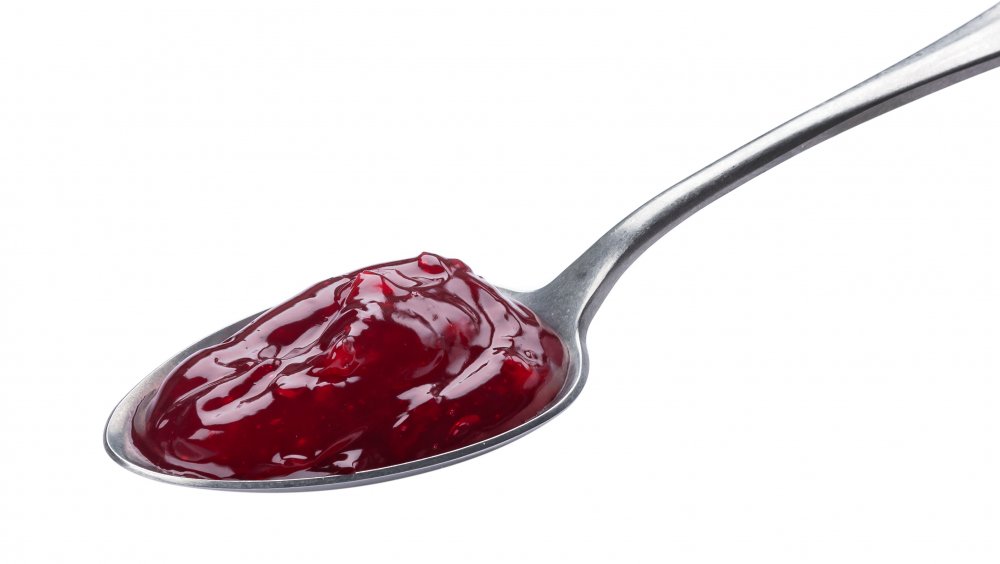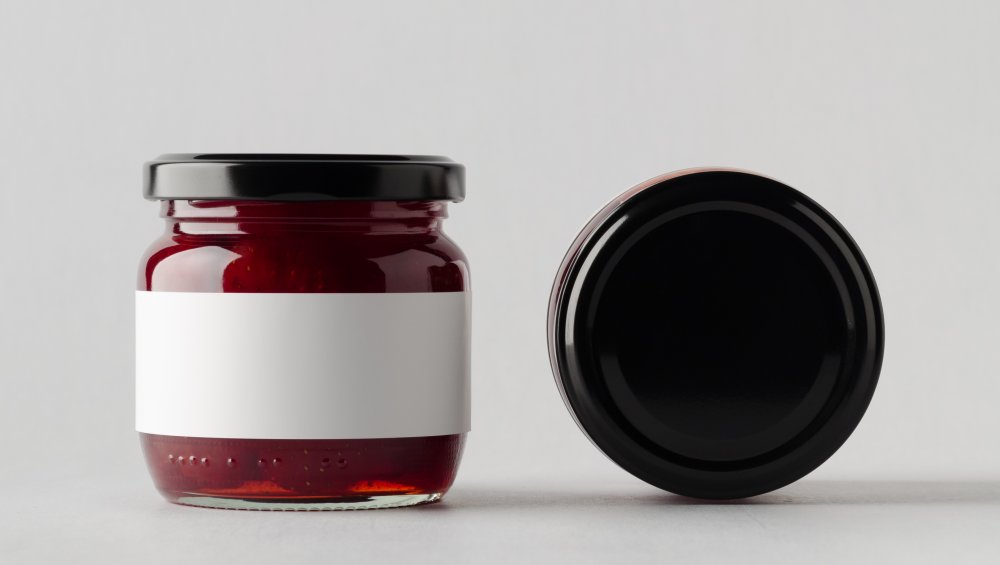The Real Difference Between Jam And Jelly
While jam and jelly tend to be crammed onto the same grocery store shelf and people often use the terms interchangeably, they're not quite the same product. Given the fact that jellies and jams contain lots of the same ingredients such as fruit, sugar, water, pectin, and some sort of acid (via Healthline), much of the difference between the two has to do with the consistency and the amount of fruit contained within the fruit spreads (via Encyclopedia Brittanica)
Jelly is smoother than jam, and is made by squishing a fruit and getting rid of the solid bits that are left behind. This is why you won't find any seeds or chunks of fruit in jelly. Instead, this process leaves the manufacturers with essentially a fruit juice which is cooked with pectin (a starch found in fruits and vegetables) to create a spread (via Food Network).
Jam, on the other hand also crushes fruit to create the spread, but doesn't remove any of the fibers or seeds from the fruit.
How the uses of jam and jelly differ
It's a little bit like creamy peanut butter vs. the chunky variety, with jelly being like creamy peanut butter and jam being closer to the chunky version.
Once you think about it, you may realize that jelly is indeed easier to spread because there are no chunks getting in the way, and this is likely why it serves as a regular counterpart to peanut butter on a peanut butter and jelly sandwich.
Jam has more of a noticeable mouthfeel given its chunkiness, and is therefore used on its own on breads and sometimes pastries, sometimes with a bit of butter. However, given that it doesn't spread so well, many people find that adding a little bit of jam with every bite is an easier method, rather than trying to slather it on a slice of bread all at once.
Because jam uses the most fruit of the two, it tends to have a stronger fruit flavor.

